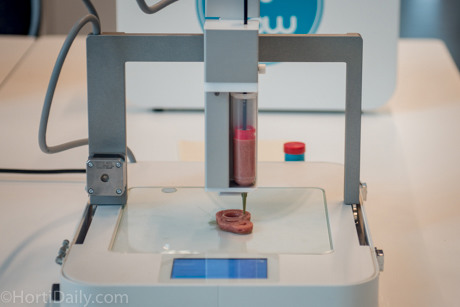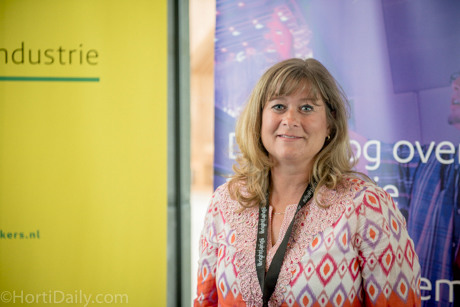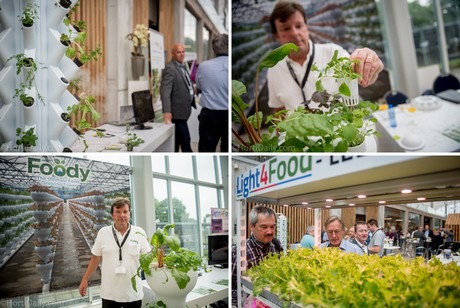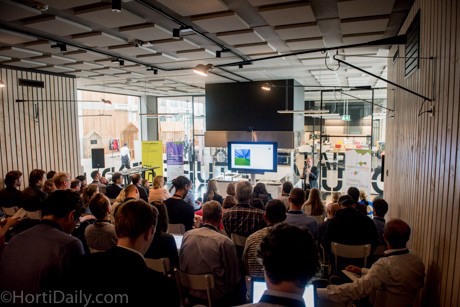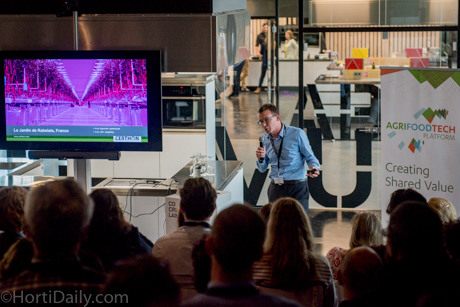With increased urbanization, vertical farms are often advertised as the food production method of the future. But can we feed the world with fancy lettuce? This, and many other topics provided food for though at yesterday's Vertical Farming Conference in the Netherlands. A broad audience with architects, horticultural suppliers, growers, retailers and breeders came together at the Brightlands Campus to discuss the next generation farmer.
Vertical farming has become a much discussed topic at horticultural events and summits. While plenty of both commercial, research and institutional vertical and indoor farms are opened (and
closed) at rapid pace lately, the new industry is struggling to find its place in the market. Reason for the organizers of the Innovative Food-Agri Event to incorporate a special program dedicated to this pioneering industry.
The Vertical Farming Conference was organized in conjunction with the 3D Food Printing Conference. Both of these new industries advocate that they will provide us the food of the future. In order to highlight the opportunities and underline these potentials, the conference brought in several interesting speakers who shared their success stories, but who also did not shy away to deliver critical side notes.
Lisa J. Newman, AeroFarms, currently wrapping up funding to expand their farm concept worldwide.
The day was kicked off by Lisa J. Newman, the COO of
AeroFarms explained how her group ventured one of the largest commercial vertical indoor farms in North America. The 76,000 square foot aeroponic plantfactory of AeroFarms in Newark, NJ, produces a variety of leafy greens, year round. Employing about 120, the company daily harvest and ships its 'Dream Greens' branded produce to major food services like The Compass Group, ShopRite, WholeFoods and FreshDirect.
Newman explained that making profit by growing commercially is not easy, complex and takes a multi disciplined approach. Their vertical farming concepts allow them to be and ag tech centric company that greatly depend on sensors and data to make informed decisions, but they also have invested a lot of time in things like a HACCP food safety plan and other policies and procedures. "We conduct a lot of R&D to adapt new technology and improve our grow cycles. There is a lot more we would like to do within the imaging space, for example by using machine vision to understand the in and outside of plants."
AeroFarms is a good example how a combination of extensive knowledge and dedication towards technology and marketing can be translated into, according to Newman, a profitable business model.
LEDs deliver opportunities
If you talk indoor farming, you're talking LEDs. Because growing indoors requires supplemental light and traditional lamps like HPS and HID generate too much heat and electricity related problems when growing indoors. Therefore Celine Nicole of
Philips and Stiina Kotiranta of
Valoya provided some insights in using LEDs to improve more than just plant growth. They explained how vertical indoor farming allows for more control of the growing environment and enables LED technology and their extensive spectra to have full control of the crop's nutritional compounds, shelf life or taste. "It's a revolution that provides opportunities for human health".
Challenges
Okay, enough about the positive side of vertical farming. Now let's talk about the real challenge; how can a vertical farm solve the world food issue? Can we feed the world with just leafy greens and culinary herbs? An interactive room discussion gave some insight into the public opinion. Participants shared for example an opinion that a wider variety of crops need to be grown in order to make vertical farming a game changer.
And what about the high electricity cost and operational costs of a vertical farm? Does that really make them as sustainable and profitable as often advertised?
According to Jan Westra of
Priva, it is very important to determine a certain goal to have a business case. "What do you want to achieve? Do you want to start an urban farm from a social point of view or to deploy a real state strategy and give a new impulse to an existing building? Or do you want to grow food in an impossible location like the south pole? Vertical farming does allow you to grow practically anywhere, but there are a huge amount of factors that will determine whether you have a profitable business case or not. From local utility costs towards marketing situations."
Furthermore, Westra stressed that the new vertical and indoor farming industry is a blue ocean which could learn a lot from the existing greenhouse industry and vice versa. "It is two different industries with a lot of overlap, they should cooperate more often to avoid pitfalls."
Martin Veenstra, Certhon, spoke about the gray area between a greenhouse and an indoor farm.
Pinkhouse
This was also affirmed by the presentation of Martin Veenstra of
Certhon. He showed a picture of Jardin de Rabelais, a French greenhouse grower with an LED-lit semi closed greenhouse. When this tomato grower has its screens and vents closed, he is basically growing in a completely controlled environment. "In fact, this is a big indoor farm. So what is the exact definition of an indoor or vertical farm. There is a gray area in between both."
Also Veenstra stressed that vertical farming creates a lot of possibilities. But what about the feasibility? With the right technology and knowledge, basically anything is possible. Growing bell peppers without daylight. Possible. Growing lettuce in a shipping container. Possible. The options are limitless. But does it make sense? Does it make any sense (and more important: money) when your competitor is growing them next door in a traditional greenhouse with daylight at 50% of the cost? "The purpose of the type of cultivation should be determined. When vertical farming allows you to grow a fresher, local product that you can market with a premium it makes sense, go for it. The goal is then to grow local and a vertical farm allows you to achieve this goal. Growing in a vertical farm simply because it is vertical may never be the goal."
